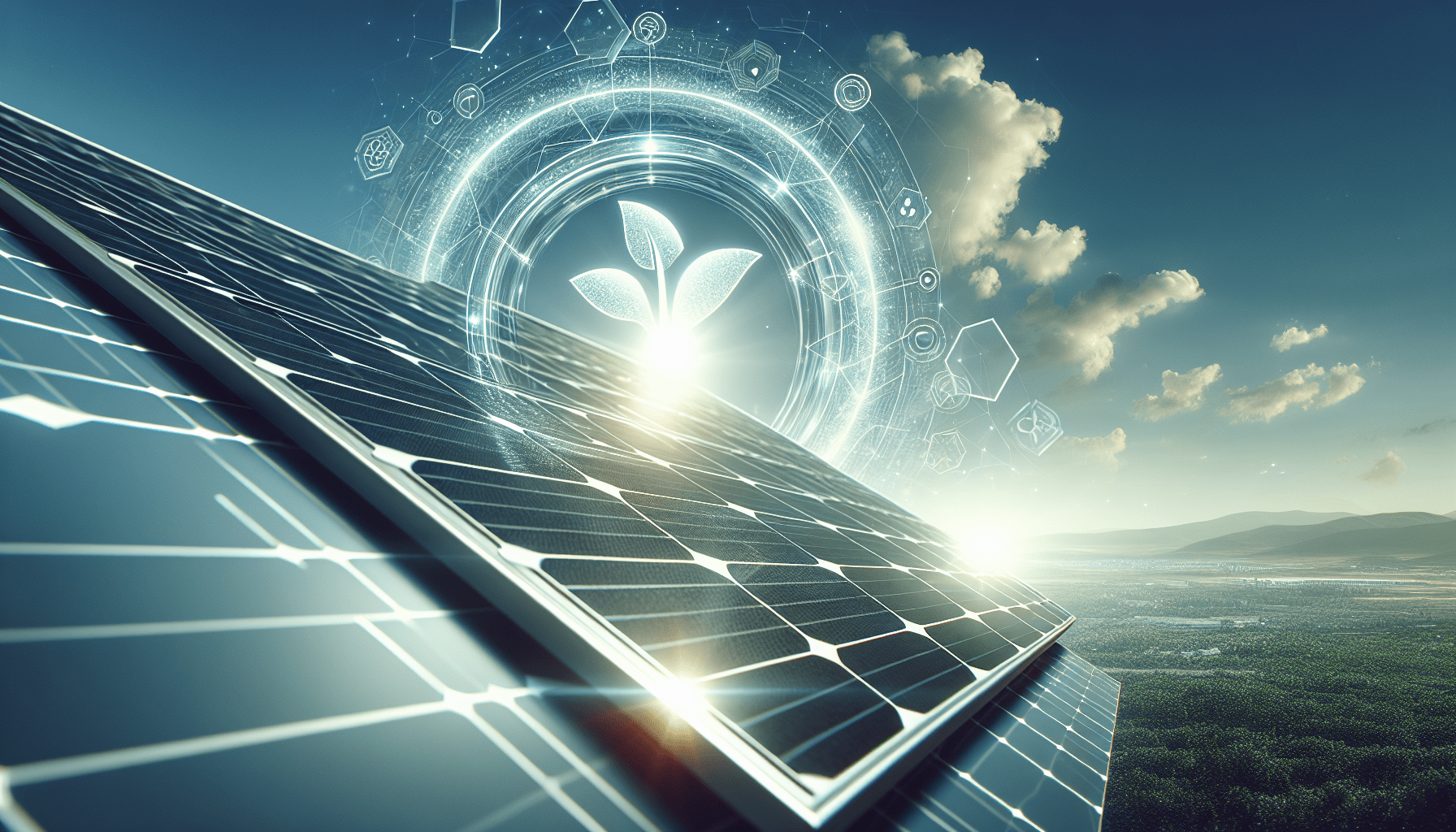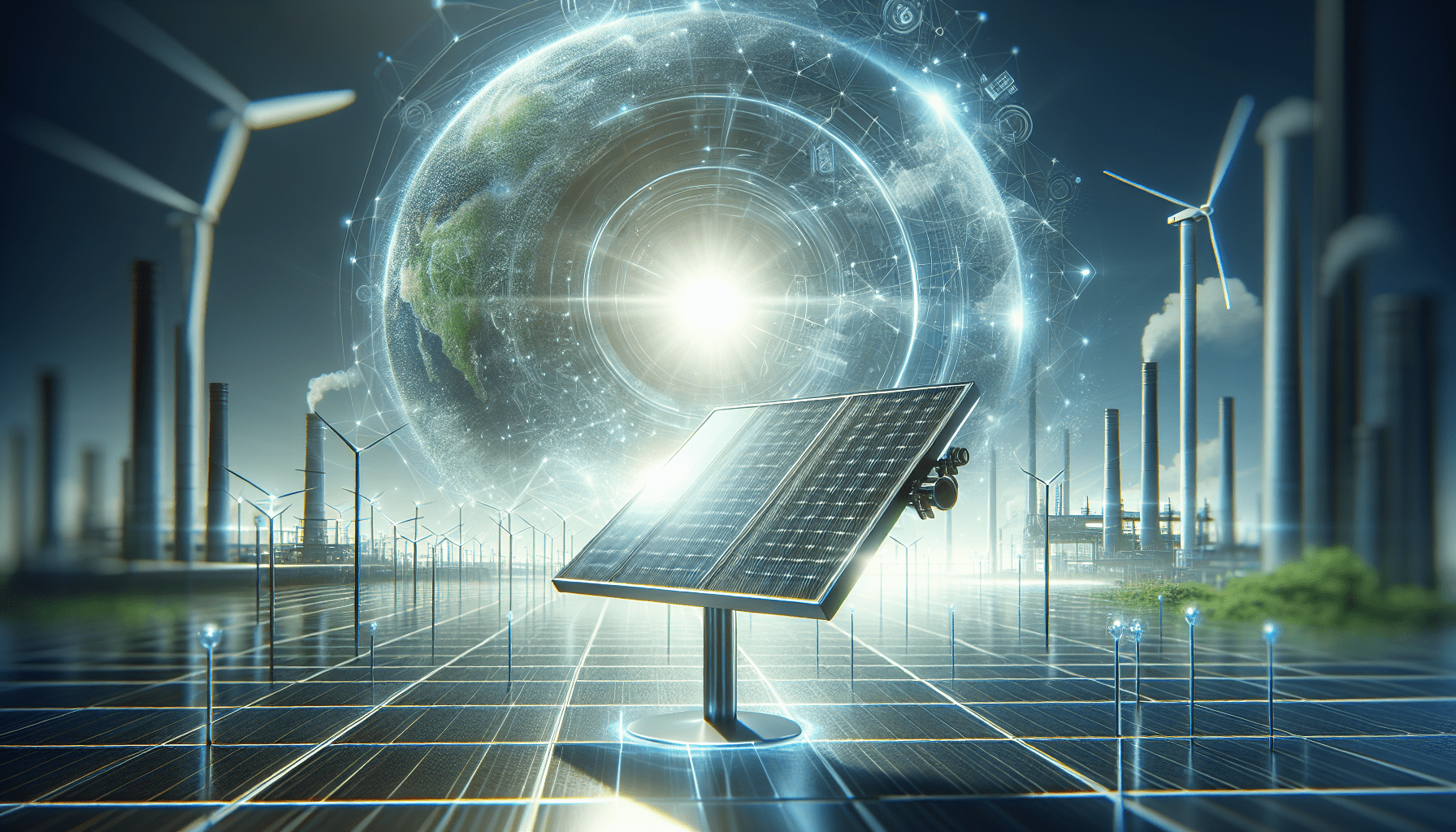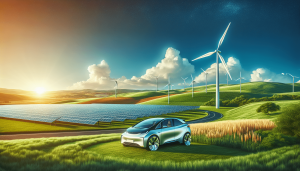In our rapidly evolving world, green technology is at the forefront of innovation, pushing boundaries and creating sustainable solutions for a healthier planet. In our article, “What Are The Latest Trends In Green Tech?,” we explore the cutting-edge advancements that are set to change the way we live and interact with our environment. From the rise of renewable energy sources to the latest breakthroughs in sustainable agriculture and eco-friendly transportation, we’ll guide you through the exciting developments that are shaping our future. Together, let’s delve into these transformative trends and discover how they are paving the way for a greener tomorrow. What are the latest trends in green tech? This is a question that many of us are eager to explore, especially in a world that’s increasingly moving towards sustainability and environmental responsibility. The innovations in green technology are providing exciting new solutions to some of the most pressing environmental problems we face today.

What Is Green Tech?
Green tech, short for green technology, encompasses a broad range of products, services, and processes that utilize renewable materials and energy sources. The primary goal is to reduce emissions, conserve natural resources, and minimize waste. As we’re all working towards a greener future, understanding the latest trends in green tech can help us make better choices in our personal lives, advocate for responsible policies, and invest in promising new technologies.
Renewable Energy Advancements
One of the most exciting areas in green tech is the continuous advancements in renewable energy. This sector is poised to change not only how we generate electricity but also how we store and distribute it.
Solar Power Innovations
Solar technology has seen remarkable improvements. Traditional solar panels are becoming more efficient, with the latest models exceeding 22% efficiency rates. Besides, new technologies like transparent solar panels, which can be integrated into windows and building facades, are making it easier to incorporate solar energy into everyday structures.
Wind Energy Developments
Wind energy is also experiencing significant strides. Offshore wind farms are becoming more prevalent, particularly in areas where land space is limited. Innovations like floating turbines are allowing us to harness wind energy in previously inaccessible deep-water locations.
Energy Storage Solutions
Effective energy storage is one of the biggest challenges facing renewable energy. Lithium-ion batteries have been the go-to solution, but they have limitations in terms of cost, lifetime, and safety. Newer technologies such as solid-state batteries, flow batteries, and even sodium-ion batteries are being developed to provide more efficient and safer energy storage solutions.
| Technology | Description |
|---|---|
| Solar Power | Enhanced efficiency and new integrations like transparent panels |
| Wind Energy | Offshore and floating turbines for greater reach |
| Energy Storage | Advancements in solid-state, flow, and sodium-ion batteries |
Electric and Hybrid Vehicles
Transportation is another critical area where green tech is making significant impacts. Electric vehicles (EVs) and hybrid vehicles are rapidly becoming mainstream due to their lower environmental footprint.
Battery Innovations
New battery technologies are crucial for the widespread adoption of electric vehicles. High-capacity batteries that charge faster and last longer are continually being developed. For example, silicon anode batteries promise to increase energy capacity significantly compared to current lithium-ion batteries.
Charging Infrastructure
An extensive and reliable charging infrastructure is essential for the mass adoption of electric vehicles. Ultra-fast charging stations, capable of replenishing an EV’s battery in just minutes, are being deployed in more locations. Additionally, wireless charging technology is emerging, making the charging process even more convenient.
Autonomous and Shared Mobility
The integration of autonomous driving technology with EVs could revolutionize our transportation systems. Shared electric vehicles, such as electric ride-hailing services and autonomous taxis, can reduce the number of vehicles on the road, thus lowering overall emissions.
| Advancement | Description |
|---|---|
| Battery Innovations | High-capacity, faster-charging, and longer-lasting batteries |
| Charging Infrastructure | Ultra-fast and wireless charging stations |
| Autonomous & Shared Mobility | Combining autonomous tech with EVs for a more efficient system |
Sustainable Agriculture and Food Production
Our food systems play a significant role in environmental sustainability. Green tech is making waves in agriculture by promoting practices that are more efficient and less harmful to our planet.
Precision Farming
Precision farming uses data and technology to monitor and manage crops accurately. Drones, sensors, and GPS technology allow farmers to optimize water use, apply fertilizers precisely where needed, and monitor crop health in real-time. This not only increases yield but also reduces resource use.
Vertical Farming
Urban areas are getting greener with the rise of vertical farming. These farms grow crops in stacked layers, often using LED lights and hydroponic or aeroponic systems. This method conserves space and water and allows for year-round crop production, regardless of the climate.
Lab-Grown Food
Lab-grown meat and other alternatives are gaining traction, thanks to advances in biotechnology. These products provide protein-rich food without the environmental impact associated with traditional livestock farming, such as methane emissions and high water usage.
| Agricultural Tech | Description |
|---|---|
| Precision Farming | Uses data and tech for more efficient and precise farming |
| Vertical Farming | Growing crops in stacked layers to save space and resources |
| Lab-Grown Food | Producing meat and protein alternatives with reduced environmental impact |

Smart Homes and Buildings
Smart technology in our homes and buildings can significantly reduce energy consumption and improve overall sustainability.
Smart Thermostats
Smart thermostats learn our schedules and habits to optimize heating and cooling systems for maximum efficiency. They can be controlled remotely and even adjust settings based on real-time weather data.
Energy-Efficient Appliances
Modern appliances are designed to consume less energy and water without compromising on performance. Smart appliances go a step further by optimizing their operation based on usage patterns and external factors.
Building Automation Systems
For larger buildings, automation systems can manage lighting, HVAC, and other systems to ensure they operate at peak efficiency. Sensors and smart meters provide data that can be used to make adjustments and track performance over time.
| Smart Home Tech | Description |
|---|---|
| Smart Thermostats | Optimize HVAC systems based on learning user behavior and weather data |
| Energy-Efficient Appliances | Reduced energy and water consumption with optimal performance |
| Building Automation Systems | Manage and optimize building systems through sensors and smart meters |
Waste Management and Recycling
Proper waste management and innovative recycling methods are critical for reducing our environmental footprint. Green tech is playing a pivotal role in transforming these areas.
Advanced Recycling Techniques
New methods of recycling, like chemical recycling, can break down plastics into their base components, which can then be reused to create new products. This can potentially reduce the reliance on virgin materials.
Waste-to-Energy
Waste-to-energy technology transforms non-recyclable waste into usable heat, electricity, or fuel. Modern incineration methods, pyrolysis, and gasification are more efficient and emit fewer pollutants than traditional methods.
Biodegradable Materials
Developing materials that naturally degrade over time can help reduce the amount of waste that ends up in landfills. Innovations in biodegradable plastics and packaging materials are paving the way for more sustainable consumption.
| Waste Tech | Description |
|---|---|
| Advanced Recycling | Chemical recycling and innovative methods to reuse materials |
| Waste-to-Energy | Transforming waste into heat, electricity, or fuel |
| Biodegradable Materials | Creating materials that break down naturally to reduce landfill waste |

Water Conservation Technologies
Water is one of our most precious resources, and green tech is helping us manage and conserve it more efficiently.
Smart Irrigation Systems
Smart irrigation systems use sensors and weather data to deliver the right amount of water to plants, reducing waste and promoting healthier growth. These systems are particularly valuable in agriculture and landscaping.
Water Recycling
Innovations in water recycling systems enable us to reclaim and reuse wastewater for various purposes. Greywater systems, for instance, can treat water from sinks and showers for use in toilets and irrigation.
Desalination Technologies
As freshwater resources become scarcer, desalination technologies are becoming increasingly important. New methods, such as reverse osmosis and solar desalination, are making it more feasible to convert seawater into potable water.
| Water Tech | Description |
|---|---|
| Smart Irrigation Systems | Uses sensors and weather data for efficient water use |
| Water Recycling | Systems to treat and reuse wastewater |
| Desalination Technologies | Converting seawater into potable water through advanced methods |
Carbon Capture and Storage
One of the biggest challenges in combating climate change is managing the amount of carbon dioxide (CO2) in the atmosphere. Carbon capture and storage (CCS) technologies are developing rapidly to address this issue.
Direct Air Capture
Direct air capture (DAC) involves extracting CO2 directly from the atmosphere. This captured CO2 can be stored underground or utilized in products like fuels, plastics, and even carbonated beverages.
Bioenergy with CCS
Bioenergy with carbon capture and storage (BECCS) combines biomass energy production with CCS. As biomass absorbs CO2 during growth, burning it for energy and capturing the resulting emissions can result in a net-negative carbon process.
Geological Storage
Geological storage involves injecting captured CO2 into underground rock formations for long-term storage. This can potentially sequester billions of tons of CO2, helping to mitigate its impact on the environment.
| CCS Tech | Description |
|---|---|
| Direct Air Capture | Extracting CO2 directly from the atmosphere |
| Bioenergy with CCS | Combining biomass energy with carbon capture for net-negative emissions |
| Geological Storage | Long-term storage of CO2 in underground rock formations |

Implementing Green Tech in Everyday Life
The advancements in green technology are plentiful, but how can we, as individuals, implement these innovations in our daily lives to contribute to a sustainable future? Here are some practical suggestions.
Home Energy Improvements
Installing solar panels, switching to energy-efficient appliances, and using smart thermostats can significantly reduce our energy consumption. Small changes like switching to LED bulbs and unplugging devices when not in use also make a difference.
Green Transportation
We can opt for electric or hybrid vehicles or choose to use public transportation, bike, or walk whenever possible. Carpooling is another great way to reduce our carbon footprint.
Sustainable Consumption
Choosing products made from biodegradable or recycled materials, reducing single-use plastics, and supporting companies that prioritize sustainability are all steps we can take to reduce our environmental impact.
Waste Reduction
Implementing proper recycling practices and composting organic waste can reduce the amount of trash that ends up in landfills. We can also support and advocate for improved local waste management policies.
Water Conservation
Using water-saving fixtures, fixing leaks promptly, and employing smart irrigation systems for gardens are effective ways to conserve water at home.
| Daily Action | Description |
|---|---|
| Home Energy Improvements | Adopting solar panels, energy-efficient appliances, and smart devices |
| Green Transportation | Opting for electric vehicles, public transport, and carpooling |
| Sustainable Consumption | Choosing biodegradable and recycled products |
| Waste Reduction | Recycling, composting, and supporting better waste management |
| Water Conservation | Using water-efficient fixtures and smart irrigation systems |
The Future of Green Tech
The future of green tech looks promising as innovation continues to drive us towards more sustainable solutions. As the technologies mentioned here evolve and new ones emerge, we can expect to see an even greater impact on our environment and our daily lives.
Policy and Regulation
Government policies and regulations play a critical role in the adoption of green technologies. Incentives for renewable energy, stricter emissions standards, and support for research and development are all necessary to drive the transition towards a sustainable future.
Corporate Responsibility
Corporations also have a significant role to play. Many companies are already recognizing the importance of sustainability and are investing in green technologies and practices. Continued corporate responsibility will be crucial in making lasting environmental impacts.
Public Awareness and Education
Finally, raising public awareness and educating people about the benefits and possibilities of green tech are essential for widespread adoption. As more of us become informed and engaged, the collective effort can lead to substantial positive changes.
| Future Aspect | Description |
|---|---|
| Policy and Regulation | Government support through incentives and standards |
| Corporate Responsibility | Investment in sustainable practices and technologies by companies |
| Public Awareness | Education and awareness campaigns to inform and engage the public |
In conclusion, exploring the latest trends in green tech reveals an exciting world of innovation and possibility. From renewable energy and electric vehicles to sustainable agriculture and water conservation, these advancements are paving the way for a more sustainable future. As we continue to integrate these technologies into our lives and advocate for policies that support them, we can collectively make a significant impact on our planet. Let’s embrace these changes and work together towards a greener tomorrow.




